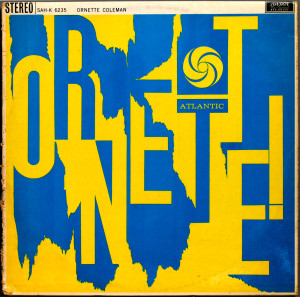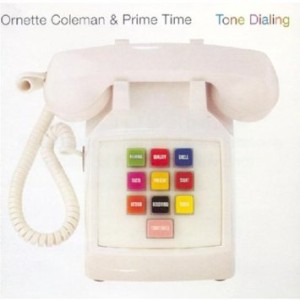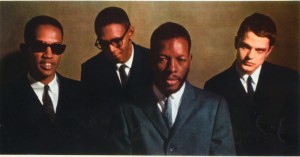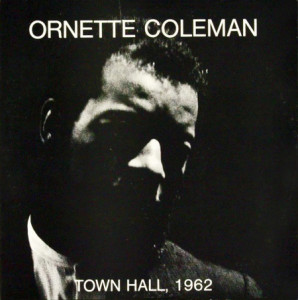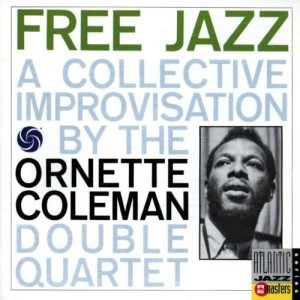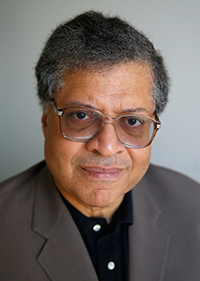OK, Stranger Than Paradise, right? Jim Jarmusch? 1984? That one. See it soon, if you haven’t yet. Holds up pretty well.
That’s not the main reason I’m calling this meeting, but anyway…
Remember how Screamin’ Jay Hawkins original 1956 recording of “I Put A Spell On You” was a recurring motif because it was the only record that Eva (Eszter Balint), the movie’s truculent teen-aged Hungarian émigré, wanted to listen to? Now remember, also, when Eva gets into a car with Eddie (John Lurie), her lizard-cool cousin from the Lower East Side, and his not-quite-as-cool sidekick Eddie (Richard Edson) for a New York-to-Cleveland road trip and she insists they put on her Screamin’ Jay tape. And even though Willie’s borderline-sick of the tune, Eddie’s really into it.
“This,” Eddie proclaims, “is driving music!”
Well now…
Last Friday afternoon, I drove from Bloomfield, Connecticut to Brooklyn, New York, a three-and-a-half-hour trip that ended up being more like five hours. (I did mention it was a Friday afternoon.) And in tribute to Ornette Coleman, who had joined the ancestors the day before, I had my IPod patched into my car speakers and locked throughout on Total Ornette Shuffle, covering the gamut from his 1958 Something Else Pacific Jazz sessions through the groundbreaking Atlantic sides including The Shape of Jazz to Come, Free Jazz and This Is Our Music, and the funky electro-boogie of his Prime Time band all the way to his 2007 live concert disc Sound Museum that helped him win a Pulitzer Prize.
By the time I crawled off the Van Wyck and squeezed myself onto the Jackie Robinson Parkway, I was struck dumb by the following revelation: Ornette Coleman is kickass driving music! It doesn’t matter whether you’re cruising through the woods or mired in gridlock. Coleman’s music in all his varied settings, even on his inflammatory -at-the-time tenor album from 1962, can transfix you into a state that’s somehow both chillaxed and vigilant. In some quadrants, it’s called being Very Much Alive To Your Moment. Whatever you call it, it’s odd (but not really) that I’m somehow more attentive to Coleman while in motion than when sitting still, either when watching him live or listening to his records.
Indeed, I was fond of telling city folk of varying ages claiming they could not, or would not ever engage Ornette Coleman’s compulsively renegade art that in the era of digital-portable music being piped inside one’s head, there were rewards and maybe even illumination to be found in letting, say, “Lonely Woman.” “Change of the Century,” or “Song X” weave through the beautiful mosaic of ambient urban sound. Whether your day needed added propulsion or a demilitarized zone, the music, at any tempo or tone, could provide both. To think that there are people who remember when all this music was able to do was make people mad — even those who should have known better, and eventually did.
Did anybody take me up on it? Don’t know, don’t care, because I kept at it even though I knew what I was up against: Trying to explain “harmolodics.” It was Coleman’s own term for his aesthetic principles, and while there is no altogether satisfying definition for the word, it may be characterized in part as organic music that invents and re-invents itself off improvisation itself and not on chords. Even though his music has been around for at least a couple generations, there are those who still have trouble with the harmolodic concept, however much the music associated with it evokes powerful strains of both bebop and the blues at full cry.
Listen to that saxophone! I would say to the hardheads. If a singer made those sounds, you’d be swooning, swaying and even rocking with it. Those sounds over time did make my point, and then some. I’m hardly the first to insist that, however much Coleman’s ringing, vibrating tone was associated with all things modern and abstract, there was also something about his phrasing that was deep-rooted, even embryonic. But then there was the music’s relationship with its rhythm section. What was there to hold onto? the hardheads complained. I insisted that were always beats you could not only ride, but also dance to, if you bothered to look for them.. The problem (I always added mostly for their benefit) was that the dancing that went along with those beats hadn’t been invented yet.
That last part, of course, is so very wrong. Lost of people I knew did dance to Coleman’s music; sometimes spontaneously, even organically off the improvisations as the music mandated; and sometimes, as they did at Lincoln Center in the summer of 1997 to the jams laid down by that aforementioned Prime Time band. This was at the climax of a weeklong tribute to All Things Ornette, whose sundry participants included the New York Philharmonic and the downtown power company known as Lou Reed and Laurie Anderson. I reviewed that festival for Newsday, concluding somewhat cheekily that we’d all been living in Coleman’s world for decades now, only we’re now beginning to notice it.
I’d still like to believe that, especially given the play given last week to Coleman’s passing in major news outlets. Yet there somehow seemed greater attention paid in mass-market precincts to Christopher Lee, the venerable British character actor and horror-movie cult star, whose death was reported the same day. I’m as much in thrall to movie cults as any dork, but there’s a very big difference between being a reliably accomplished bogeyman and changing the furniture in people’s heads.
Yet the deep sadness that reverberates among those who do appreciate Coleman’s significance over his death comes from two places. One is the belief that, even at 85, he was ready and able to keep working in public. (There was at least one scheduled tour date for later this year, in Paris.) The other, more complicated, resides in a melancholy suspicion that with Ornette Coleman’s departure, we’re also saying goodbye to the future; or perhaps more to the point, a belief in the future’s possibilities. The risks he took back in the fifties embodied jazz’s last great modernist convulsion. As long as he was around, it was possible to imagine him still leading the charge for further discovery.
But as long as there remain multitudes out there who still don’t quite “get” what Coleman was up to, the future he mapped out will always be with us, indoctrinating new enlistees in the harmolodic cause, tempting fresh crops of painters, poets, dancers and, of course, musicians in all marketing categories to think organically – or think different, at least. As I wrote 18 years ago, it’s still Ornette’s world, no matter how long it takes for the rest of that world to figure it out.
In the meantime…If you think you’re missing something in Ornette’s music and really wish to “know” more, the way to do it is not by sitting rock-still and barber-close to the speakers hoping to somehow catch a key phrase or progression that will somehow reveal the universe’s secrets. Take the music with you when you move, whether on foot or in a vehicle. When his sounds merge with the colors, sensations, thoughts and white noise passing through you, they still may not make anything resembling what you consider “sense, but they may well pry open your senses to new ways of living and feeling your way through time. There are, as Art always knows, no conclusions and Art doesn’t want you to find them anyway. Art says: Here are new frequencies and stations for you to follow. Carry them with you and everything you think is old may turn out to be shrink-wrapped and shiny.

